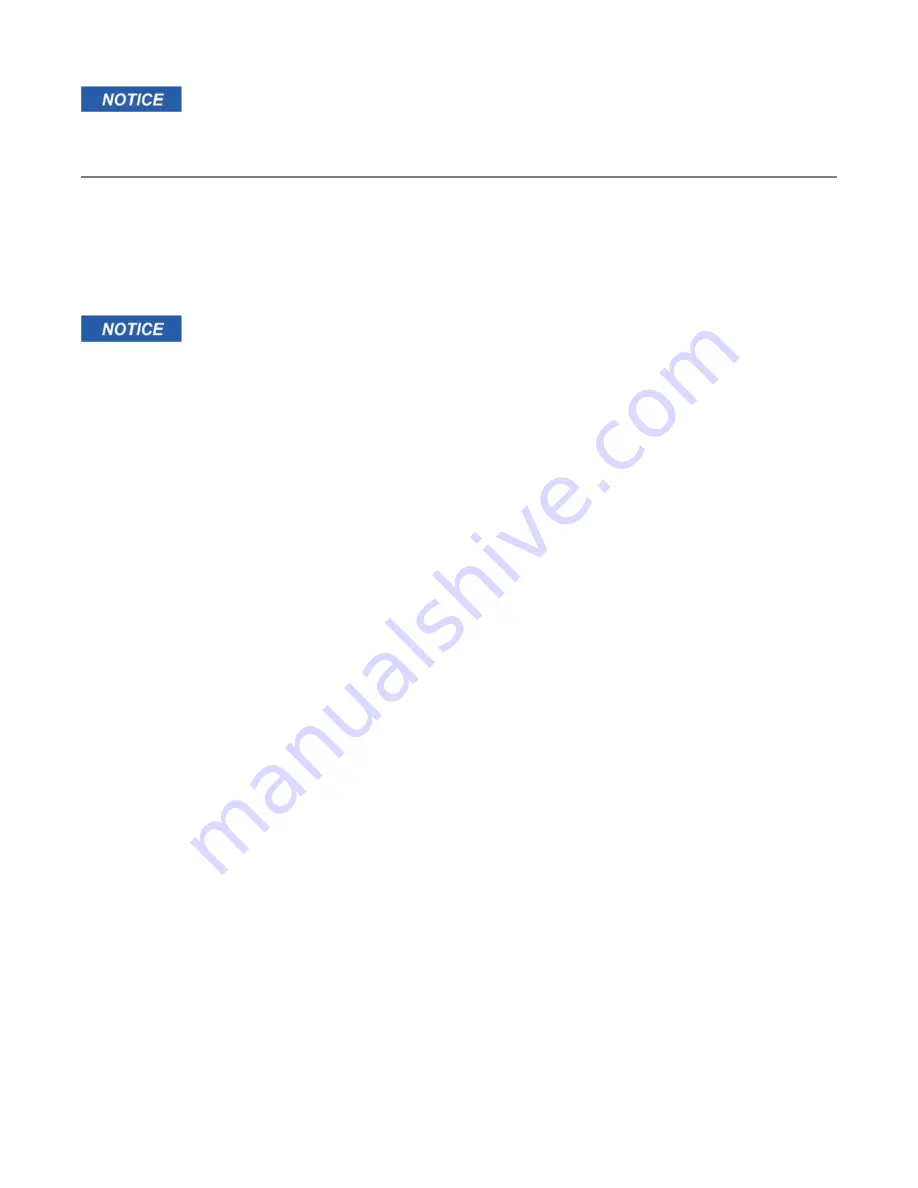
P1512181 R0
39
Operating the conveyor with a damaged roller will result in a damaged conveyor belt.
7.10. Tension the Conveyor Belt
Adjusting your conveyor belt for proper tension helps to ensure trouble-free operation and long belt life.
The conveyor belt only needs to be tight enough to not slip on the drive roller. If the belt is too loose, it will slip
on the drive roller making a noticeable sound, slowing the belt down.
The conveyor belt should not be easy to pull from the hopper transition sides, otherwise the belt will require
tensioning.
Failure to stop using a conveyor with a slipping belt will damage it and/or the drive roller
lagging. In extreme cases, sections of burnt belt will have to be replaced. This type of damage
is not covered by warranty.
To set correct conveyor belt tension:
1. Loosen the bearing bolts and jam nut (if included) at the hopper roller, see
2. Tighten the tightener bolts equally, use a tape measure to verify. The conveyor belt should deflect 1-2”
when pushed down with a 5 lb force, or be difficult to pull from the sides of hopper transition.
3. Tighten the bearing bolts and jam nut (if included).
4. Ensure the hopper roller is tensioned equally by using a tape measure to check both sides.
5. Check the belt tension by running the conveyor for one minute. If the conveyor belt is not slipping, then
proceed to next step; otherwise repeat from step 1.
6. After the conveyor belt has been tensioned, check the alignment of all rollers , see
.
7. If the conveyor belt is still loose after tensioning, the belt needs to be shortened or replaced (depending on
wear).
BCX2 FIELD LOADER – PORTABLE GRAIN BELT CONVEYOR
















































